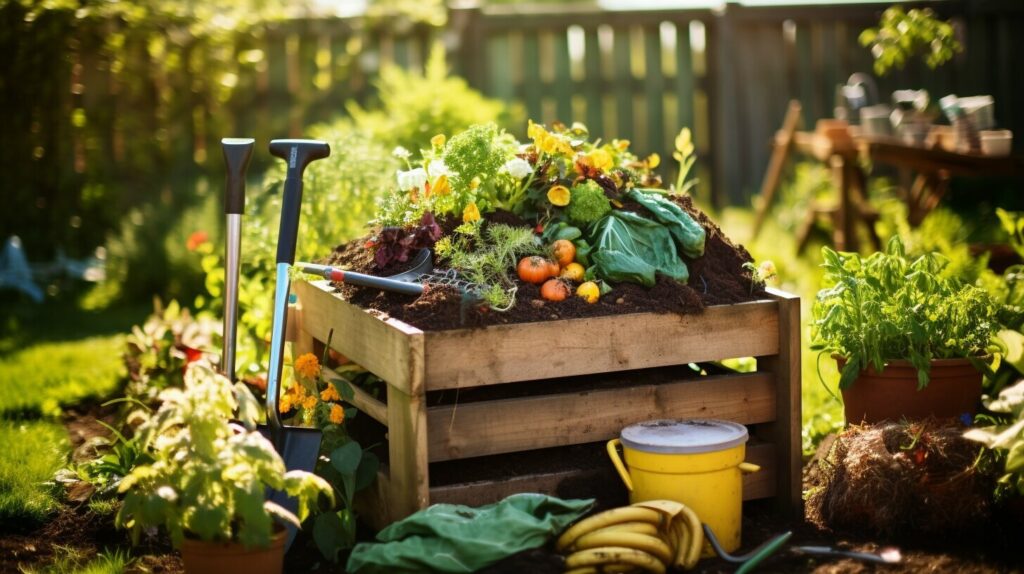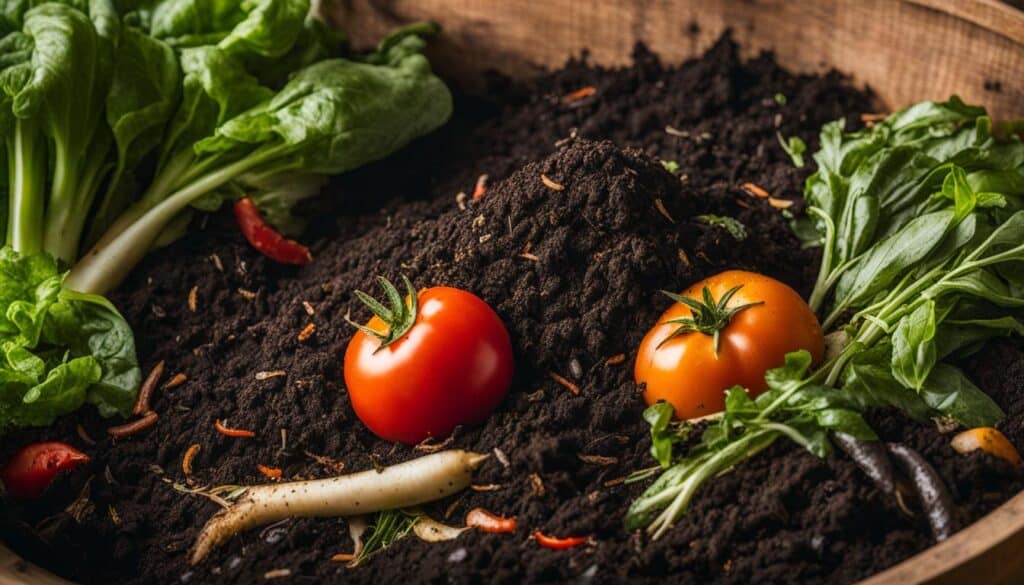Traditional Composting is a fantastic way to reduce waste and create nutrient-rich soil for your garden. By following the key ingredients and methods of traditional composting, you can easily transform your organic waste into garden gold. Let’s dive into the world of traditional composting and explore the techniques that will help you become a composting pro.
- Traditional composting is a controlled, aerobic process that converts organic materials into compost through natural decomposition.
- Key ingredients for successful traditional composting include carbon-rich “browns” like dry leaves, and nitrogen-rich “greens” like food scraps and grass clippings.
- Turning the compost pile occasionally ensures proper aeration and speeds up the decomposition process.
- Traditional composting offers numerous benefits such as reducing landfill waste, recycling organic materials, and improving soil health.
- Alternative composting methods, like worm composting and bokashi composting, provide additional options depending on your needs and available space.
For More Information On Composting, Read This Blog Post. Different Types Of Compost To Enrich Your Soil
Mastering Traditional Composting
Traditional composting is a simple yet rewarding process that allows you to transform organic materials into nutrient-rich compost for your garden. By following a few key steps and implementing some composting tips, you can master the art of traditional composting and reap the benefits of this sustainable practice.
Key Steps in the Composting Process
The composting process begins with selecting the right materials for your compost pile. Carbon-rich “browns,” such as dry leaves, straw, and shredded newspaper, provide the necessary carbon for decomposition. Nitrogen-rich “greens,” including grass clippings, vegetable scraps, and coffee grounds, provide the essential nitrogen. Layering these materials in your compost pile will create a balanced environment for microbial activity and decomposition.
Moisture is another critical factor in composting. Your compost pile should be damp like a wrung-out sponge, so make sure to add water if it becomes too dry. Turning the pile occasionally with a pitchfork or garden tool will help aerate the materials and accelerate the decomposition process. Aim to turn the pile every one to two weeks, or whenever the temperature rises above 150°F (65°C).
Composting Tips for Success
- Chop or shred larger materials to speed up decomposition and create a more uniform texture in your compost pile.
- Avoid adding meat, dairy products, or oily foods to your compost pile, as they may attract pests or promote an unpleasant odor.
- Regularly monitor the moisture level of your compost pile and adjust as needed. If it becomes too wet, add more dry materials like shredded newspaper or straw. If it becomes too dry, moisten the pile with water.
- Keep your compost pile covered to retain moisture and prevent excessive rainfall from flooding the pile.
Remember, patience is key in traditional composting. The process can take anywhere from a few months to a year, depending on various factors such as the materials used, temperature, and level of maintenance. With time and practice, you’ll become an expert in traditional composting, turning waste into black gold for your garden.
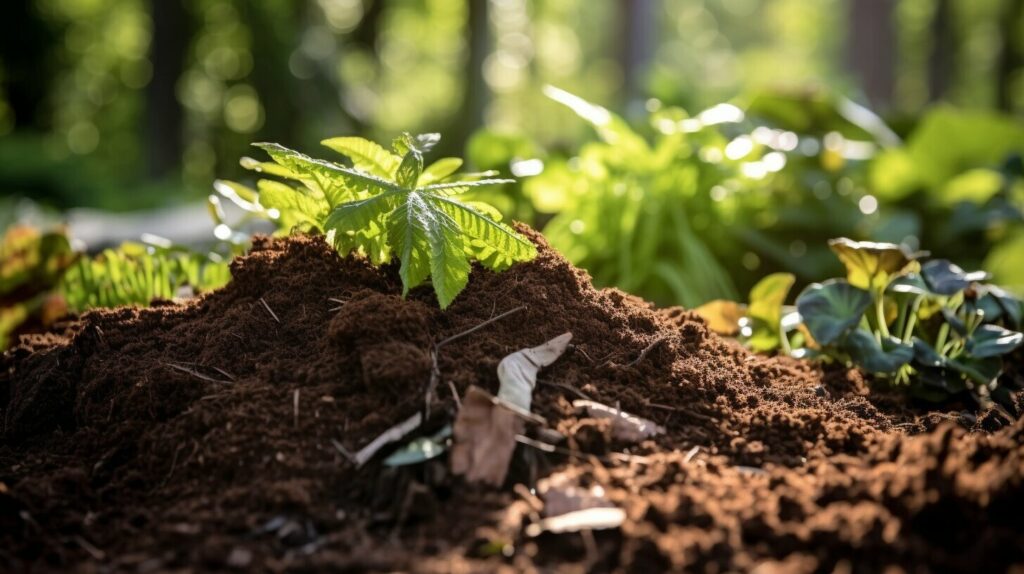
| Carbon-Rich “Browns” | Nitrogen-Rich “Greens” | |
|---|---|---|
| Examples | Dry leaves | Grass clippings |
| Straw | Vegetable scraps | |
| Shredded newspaper | Coffee grounds |
Benefits of Traditional Composting
Traditional composting offers a range of benefits for both individuals and the environment. By practicing traditional composting, we can contribute to organic waste recycling, reduce landfill waste, and create natural fertilizers for our gardens. Let’s explore the advantages of this sustainable practice.
Reducing Organic Waste
Traditional composting provides a solution for recycling organic waste. By diverting food scraps and yard waste from landfills, we can significantly reduce the amount of waste sent for disposal. This not only helps to minimize landfill space but also decreases methane gas emissions, a potent greenhouse gas that contributes to climate change. Composting allows us to take responsibility for our organic waste and turn it into a valuable resource.
Improving Soil Fertility
One of the key benefits of traditional composting is the production of nutrient-rich soil amendments. The finished compost, also known as “black gold,” is a natural fertilizer that enhances soil fertility and promotes plant growth. Compost improves soil structure, water-holding capacity, and nutrient availability, creating an ideal environment for plants to thrive. By incorporating compost into our gardens, we can nourish the soil, reduce the need for chemical fertilizers, and cultivate healthier, more productive plants.
Enhancing Environmental Sustainability
Adopting traditional composting as part of our daily routine contributes to a more sustainable environment. It helps to conserve resources by closing the organic waste loop and reducing the need for artificial fertilizers. Furthermore, composting reduces the carbon footprint associated with waste disposal and chemical-intensive agriculture. By composting our organic waste, we actively participate in building a greener future for generations to come.
| Benefits of Traditional Composting |
|---|
| Reduces organic waste sent to landfills |
| Decreases methane gas emissions |
| Improves soil fertility |
| Enhances soil structure and water-holding capacity |
| Reduces the need for chemical fertilizers |
| Promotes healthier, more productive plants |
| Contributes to environmental sustainability |
By embracing traditional composting, we can actively participate in organic waste recycling, create natural fertilizers, and contribute to a more sustainable future. This simple practice not only benefits our gardens but also helps to protect the environment we live in. Let’s join hands and make traditional composting a cornerstone of our sustainable lifestyle.
Start Your Traditional Compost Pile
Starting a traditional compost pile is a great way to recycle organic waste and create nutrient-rich soil for your garden. Composting at home is a simple and effective way to reduce landfill waste and contribute to a more sustainable environment. Here are the steps to get started with traditional composting:
Select a Suitable Location
Choose a location for your compost pile that is easily accessible and has good drainage. It can be in your backyard or even a small corner of your outdoor space. Make sure the location receives some sunlight and is away from strong odors or potential disturbances.
Build or Buy a Compost Bin
Consider building or purchasing a compost bin to contain the materials and provide structure to your compost pile. There are various options available, from simple DIY bins made of wood or wire mesh to commercially available compost bins. Choose a bin that suits your needs and the amount of composting materials you generate.
Layer the Compost Pile
Layer your compost pile with a combination of carbon-rich materials (“browns”) and nitrogen-rich materials (“greens”). Browns include dry leaves, straw, or shredded paper, while greens consist of food scraps, grass clippings, or fresh garden waste. Aim for a ratio of approximately 3 parts browns to 1 part greens to maintain a balanced compost pile. Make sure to keep your pile moist but not overly wet, as excessive moisture can slow down the decomposition process.
| Carbon-Rich Materials (“Browns”) | Nitrogen-Rich Materials (“Greens”) |
|---|---|
| Dry leaves | Food scraps |
| Straw | Grass clippings |
| Shredded paper | Fresh garden waste |
Continue layering the materials, alternating between browns and greens until your compost pile reaches the desired size. It’s a good idea to chop or shred larger materials like branches or food scraps to speed up the decomposition process.
With these simple steps, you can start your traditional compost pile and harness the power of natural decomposition to create nutrient-rich compost for your garden. Remember to turn the pile occasionally to aerate it and accelerate the composting process. Happy composting!
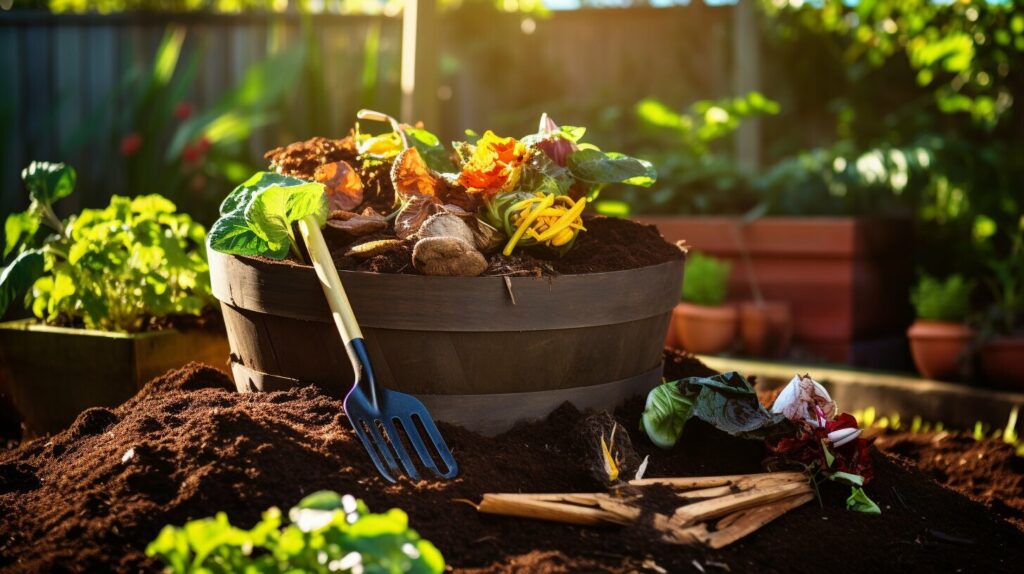
Ingredients for a Successful Compost Pile
Creating a successful compost pile requires the right combination of ingredients. To ensure proper decomposition and nutrient-rich compost, you’ll need to include both carbon-rich materials (browns) and nitrogen-rich materials (greens). Here’s a breakdown of the key ingredients:
Browns:
- Dry leaves
- Plant stalks
- Twigs
Greens:
- Food scraps
- Grass clippings
Carbon-rich materials provide structure and help absorb excess moisture in the compost pile. Nitrogen-rich materials, on the other hand, feed the microorganisms responsible for decomposition. It’s essential to maintain a balance between browns and greens to ensure optimal composting conditions.
Remember that water and air are also crucial for composting. The pile needs to be moist, but not soggy, for the microorganisms to thrive. If the compost pile becomes too dry, it may slow down the decomposition process. Similarly, too much water can result in a smelly and anaerobic pile. Regularly monitor the moisture level and adjust as needed. If the smell is over whelming you might consider pit composting.
By providing the right ingredients and maintaining ideal conditions, you’ll create a thriving compost pile that transforms organic waste into nutrient-rich compost for your garden.
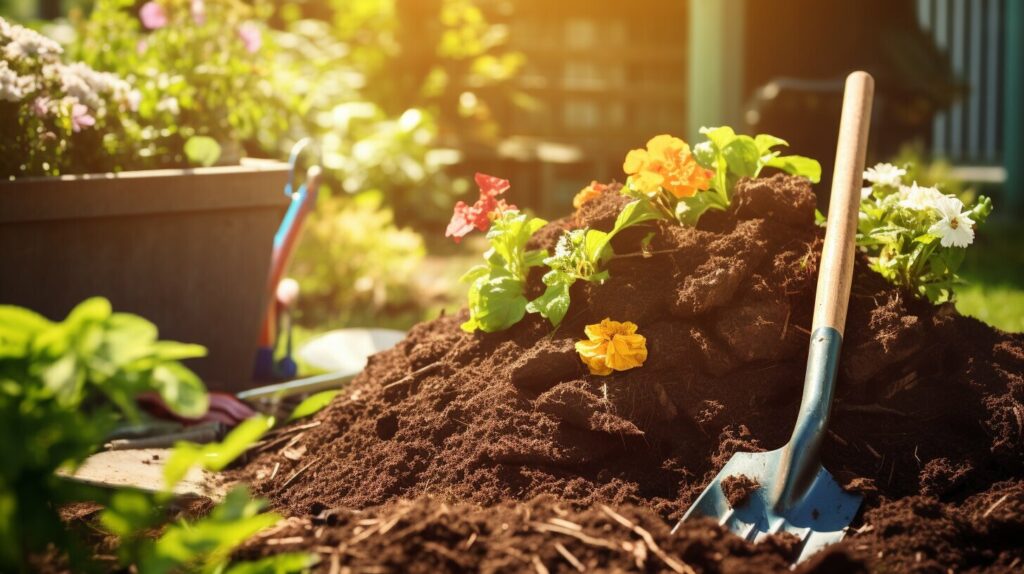
Table 5: Carbon and Nitrogen Ratio
| Material Category | Carbon/Nitrogen Ratio |
|---|---|
| Browns | 25-30:1 |
| Greens | 20-25:1 |
The table above provides an overview of the carbon-to-nitrogen (C/N) ratio for both browns and greens. It’s important to maintain this ratio for efficient composting. If the pile becomes too carbon-rich, decomposition may slow down. On the other hand, an excess of nitrogen-rich materials can result in a smelly and nitrogen-deficient pile. Keep in mind that the C/N ratio can vary slightly depending on the specific materials used.
Now that you understand the essential ingredients for a successful compost pile, you can start gathering and layering the materials to create your own nutrient-rich compost. Remember to maintain the proper balance, moisture level, and aeration throughout the composting process to ensure optimal results.
Compost Pile Maintenance
Proper maintenance is crucial for a healthy compost pile. Regularly tending to your compost pile will ensure the decomposition process is efficient and effective. Here are some key tips for maintaining your traditional compost pile:
1. Turning the Pile
Regularly turning the compost pile is essential for proper aeration and decomposition. Use a garden fork or shovel to mix the materials, ensuring that oxygen reaches all parts of the pile. Turning the pile every one to two weeks will prevent compaction and help break down the organic matter faster.
2. Monitoring Moisture Levels
It’s important to keep your compost pile moist, but not overly wet. Too much moisture can lead to anaerobic conditions and unpleasant odors. Check the moisture level regularly by squeezing a handful of compost. It should feel damp, like a wrung-out sponge. If it’s too dry, add water, and if it’s too wet, mix in dry browns like leaves or straw.
3. Addressing Odor Issues
If your compost pile has a foul odor, it may be an indication of poor airflow or excessive moisture. To rectify this, turn the pile more frequently to improve aeration. You can also add more carbon-rich materials such as dry leaves or shredded newspaper to help absorb excess moisture and balance the nitrogen content.
4. Maintaining the Right Balance
Keep an eye on the ratio of green to brown materials in your compost pile. Green materials, like fresh grass clippings and kitchen scraps, provide nitrogen, while brown materials, such as dry leaves and straw, provide carbon. Aim for a balance of roughly 2:1 browns to greens by volume to ensure the proper breakdown of organic matter.
| Green Materials (Nitrogen-Rich) | Brown Materials (Carbon-Rich) |
|---|---|
| Grass clippings | Dry leaves |
| Fruit and vegetable peels | Straw |
| Coffee grounds | Shredded newspaper |
By following these maintenance tips, you can ensure that your traditional compost pile remains healthy and productive. Regular turning, monitoring moisture levels, addressing odor issues, and maintaining the right balance of materials will create optimal conditions for decomposition and result in nutrient-rich compost for your garden.
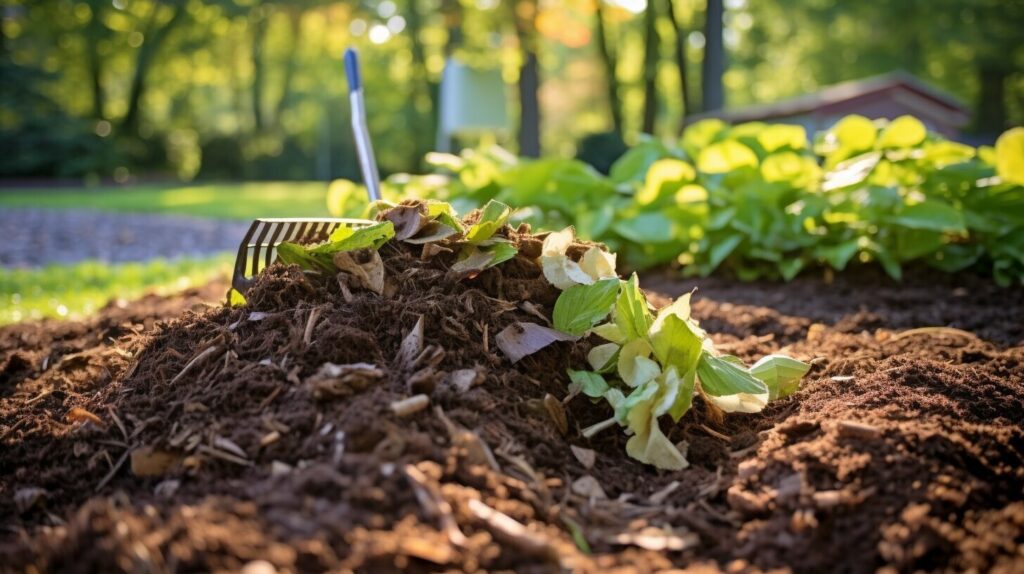
Alternative Composting Methods
While traditional composting is a popular method for recycling organic waste, there are alternative composting methods that you can explore to suit your needs and available space. One such method is worm composting, also known as vermicomposting.
Worm composting involves using worms to break down organic waste, resulting in nutrient-rich worm castings that can be used as fertilizer. This method can be done indoors or outdoors in a worm bin, making it suitable for those with limited backyard space. Worm composting is particularly beneficial for apartment dwellers or individuals who want a compact composting solution.
“Worm composting is a sustainable and efficient way to recycle organic waste and create high-quality compost.”
In addition to worm composting, other alternative composting methods include composting with bokashi and participating in community-based composting programs. Bokashi composting is a Japanese fermentation process that breaks down organic waste using a special bran. This method is convenient for those who prefer to compost in a compact container indoors and involves minimal odor or mess.
Community-based composting programs allow individuals to contribute their organic waste to a larger composting system managed by municipalities or organizations. This option is ideal for those who do not have the space or resources to compost at home but still want to participate in organic waste recycling.
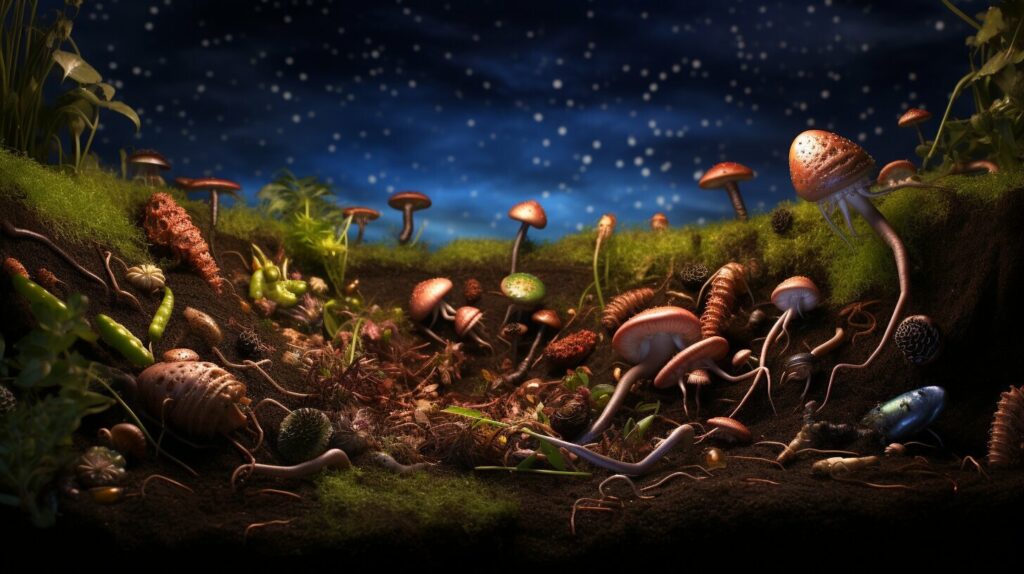
Alternative Composting Methods Comparison
| Composting Method | Key Features |
|---|---|
| Worm Composting (Vermicomposting) | – Suitable for limited space |
| – Can be done indoors or outdoors | |
| – Produces nutrient-rich worm castings | |
| Bokashi Composting | – Requires a special bran for fermentation |
| – Compact and odor-free | |
| Community-based Composting | – Contributing to a larger composting system |
Each alternative composting method offers unique advantages, allowing you to choose the one that aligns with your preferences and circumstances. Whether it’s worm composting, bokashi composting, or participating in community-based programs, these alternative methods provide additional options for recycling organic waste and contributing to a more sustainable environment.
Conclusion
Traditional composting is a fundamental and efficient method for recycling organic waste, reducing landfill waste, and cultivating nutrient-rich soil for our gardens. By following the key ingredients and techniques of traditional composting, we can effortlessly transform food scraps and yard waste into invaluable compost. The benefits of traditional composting extend beyond waste reduction, as it also plays a crucial role in reducing greenhouse gas emissions, improving soil fertility, and contributing to a more sustainable environment.
Whether you choose to pursue traditional composting or explore alternative methods, composting remains an invaluable practice that yields numerous benefits for our gardens and the planet. By embracing composting methods, we actively participate in the cycle of nature, transforming organic materials into valuable resources. From reducing waste sent to landfills to enriching our soil with natural fertilizers, composting allows us to contribute to a healthier and more sustainable future.
So, whether you decide to create a traditional compost pile in your backyard or explore alternative methods like worm composting or bokashi, remember that every effort in composting plays a significant role in creating a more sustainable world. Let’s embrace the practice of composting, nurture our gardens, and make a positive impact on the environment, one compost pile at a time.
FAQ
What is traditional composting?
Traditional composting is a controlled, aerobic process that converts organic materials into compost through natural decomposition.
What are the benefits of traditional composting?
Traditional composting allows you to recycle organic waste, reduce landfill waste, and create nutrient-rich soil for your garden. It also helps reduce greenhouse gas emissions and contributes to addressing climate change.
How do I start a traditional compost pile?
To start a traditional compost pile, select a suitable location, layer carbon-rich and nitrogen-rich materials, and ensure proper moisture and aeration. You can compost at home using food scraps and yard waste.
What are the key ingredients for a successful compost pile?
A successful compost pile requires a balance of carbon-rich materials (browns) and nitrogen-rich materials (greens). Additionally, water and air are essential ingredients for composting.
How do I maintain a compost pile?
Proper maintenance includes turning the pile occasionally, monitoring moisture levels, and adjusting as necessary. It’s important to maintain the right proportions of materials and ensure proper aeration.
Are there alternative composting methods?
Yes, alternative composting methods include worm composting, bokashi composting, and community-based composting programs. These methods provide additional options depending on your needs and available space.

